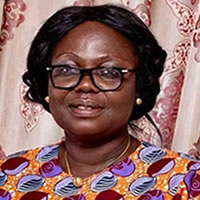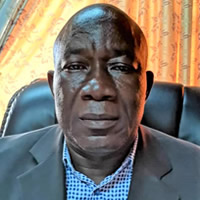Ethnicity
More than three-fifths of the Akans in the region are Brongs. Asantes and Ahafos are two other recognisable Akan groups in the region. Dagaabas constitute the highest proportion of Mole Dagbons. Three other ethnic groups, Kusasi, Nabdom and Dagomba, constitute more than one third of the Mole Dagbons. The remaining groups from the south, Guans, Ewes and Ga-Dangme are less than one tenth of the region’s population.
Religious
The distribution of the population by the various religious denominations in the region is nearly the same as the total country, except traditional religion and no religion that exchange the order. Christianity (70.8%) has the largest following, while Islam (16.1%) and no religion (7.8%) are the significant others.
Another change of order different from the national is that Catholics (22.6%) outnumber Pentecostals (20.8%). Brong Ahafo has a strong Catholic legacy, with many Catholic institutions including 7 hospitals in 7 districts. It is therefore no surprise that the Church chose Fiapre in the Sunyani District for the establishment of the first Catholic University in the country.
Large followers of Christianity are in all districts. Over four-fifths of the population in Berekum (87.4%), Jaman (83.9%), Sunyani (80.9%) and Dormaa (80.3%) are Christians. The protestant churches (28.6%) have the largest following in Berekum, followed by the Pentecostal (28.0%). Pentecostals outnumber Catholics in eight districts, the most prominent being Sunyani where the difference is more than 10 percentage points.
Jaman has the largest proportion of Catholics, where nearly two out of every five people are Catholics.
The proportion of females professing the Christian faith (73.5%) is higher than males (68.2%) in the region, in all districts in the region and total country. Apart from Catholics in Sunyani and Berekum where the proportion of males is higher than females, and Sene where the proportion of male Pentecostals is higher than females, the proportion female is larger than male in all three major Christian denominations in all districts. On the other hand, the proportion of males professing Islam, traditional and no religion, in all districts of the region, is higher than females.
Tourist Attraction Sites
The tourist attraction sites in the region cannot be complete without mention of the Tanoboase Sacred Grove. It is believed that the grove is the cradle of Brong civilization.
The groove served as a hideout to the Brongs during the 18th century Brong-Ashanti wars.
It is currently used for hiking and rock climbing. The Bui National Park, stretching from Atebubu through Banda to the proposed site of the Bui Dam, is home to many rare wildlife and vegetation. Part of the Volta Lake flows through the region and Yeji, Prang, and Kwame Danso are important towns along the banks of the lake, which can serve as growth poles for tourism development in the region.
Bui National Park / Bui Dam
It is also known for its hippopotamus population. The tourist can take a cruise on the Black Volta River through the National Park. The Bui Dam is located at the base of the Banda Mountains, the dam was built to improve Ghana's energy requirements.
The Region has a significant potential for tourism development but most of the tourist attractions and the hospitality industry are less developed. Some of the prominent tourist attractions in the Bono Region are the festivals:
Kwafie celebrated by the Dormaa, Berekum and Nsoatre people in November, December or January
Munufie celebrated by Drobo people
Akwantukese celebrated by Suma people in March
Other tourist attractions in the Bono Region
Nchiraa Waterfalls
Wedged between the mountains of the Nchiraa Settlement, the Nchiraa waterfalls is located 30 kilometres North of Wenchi. The tourist is offered a hiking adventure on a rocky and challenging footpath that leads to the waterfalls. The existence of other natural and cultural tourism within 10 kilometers radius makes the tour package exhilarating. These includes the Wurobo Ancestral Caves which is located about 8 kilometers from Nchiraa Settlement. The caves are believed to be the original dwelling place of the people of Nchiraa.
Duasidan Monkey Sanctuary
Duasidan Monkey Sanctuary is located 10 kilometers Southwest of Dormaa Ahenkro. This sanctuary hosts a rare breed of Mona monkeys. Bamboo trees form a canopy in the middle of the forest, which serves as a resting grounds for visitors. Monkeys can be seen swinging up and down tree branches and peeling bananas left out for them. It is quite a remarkable sight as the visitors get the chance to see how monkeys carry their babies on the move.
Hani Archaeological Site
One of the few archaeological sites in Ghana, the Hani archaeological site is located at Tain. Visitors can access the site of digging and the settlement of the Begho people, some of its artifacts and relics from 12th-century civilization can be found in the chiefs palace.
Nwoase Ostrich Farm
Located at Nwoase near Wenchi, is the ostrich farm. The ostrich is known to be the largest living bird. It has a long neck, long legs and two toes on each foot. Tourists can make a stop at the farm to see one of nature’s wonders as the ostrich can reach a height of 2.75 meters.
Busia Mausoleum
This mausoleum was built in memory of the late Professor K.A.Busia. A Prime Minister of the 2nd Republic of Ghana. Located at the Wenchi-Nsawkaw road about 400 meters from the Centre of Wenchi town. The Busia Mausoleum displays some artifacts and personal items used by Dr. Busia. It also takes the tourist back to ancient times when such items were used.
Asukese Forest Reserve
Asukese Forest Reserve is named after River Asukese which drains the area. It lies within the sunyani forest district. It is located in the Bono Region of Ghana and lies west of Sunyani – Mim Road through Atronie (about 19.3 km south west of Sunyani). Merchantable timber species such as the Odum, Sapele, Wawa, Chenchen, Esa with diameters as large as 150 cm can all be found in this forest. Fauna species also include antelopes, grasscutters, rats and deer.
The Mfensi Sacred Grove
Mfensi, is the name of a Sacred Grove located at the north eastern part of Kato (a small community in the Berekum Municipality in the Bono Region) along the Sunyani Berekum highway. It is about one and half kilometres from the centre of Berekum. It is believed to be an area haunted by spirits. The grove is about 40 hectares in size. Mfensi Sacred Grove is characterised by tall tropical trees some of which are Wawa, Mahogany, Ceiba, Odum, Ofram, Cidrella, Asanfena, Wabire etc.
Oldest Mango tree in Ghana
The Korase mango tree located in the Jaman North District, is believed to be the oldest mango tree in Ghana based on research by the archeology department of University of Ghana-Legon according to the traditional leaders in Korase
Asuokor Mystery fishes
There are mystery fishes in the Asuokor river in the Jaman North District, which usually comes ashore based on performance of some traditional rituals. These mystery fishes cannot be eaten.
Date Created : 8/10/2023 12:00:00 AM




